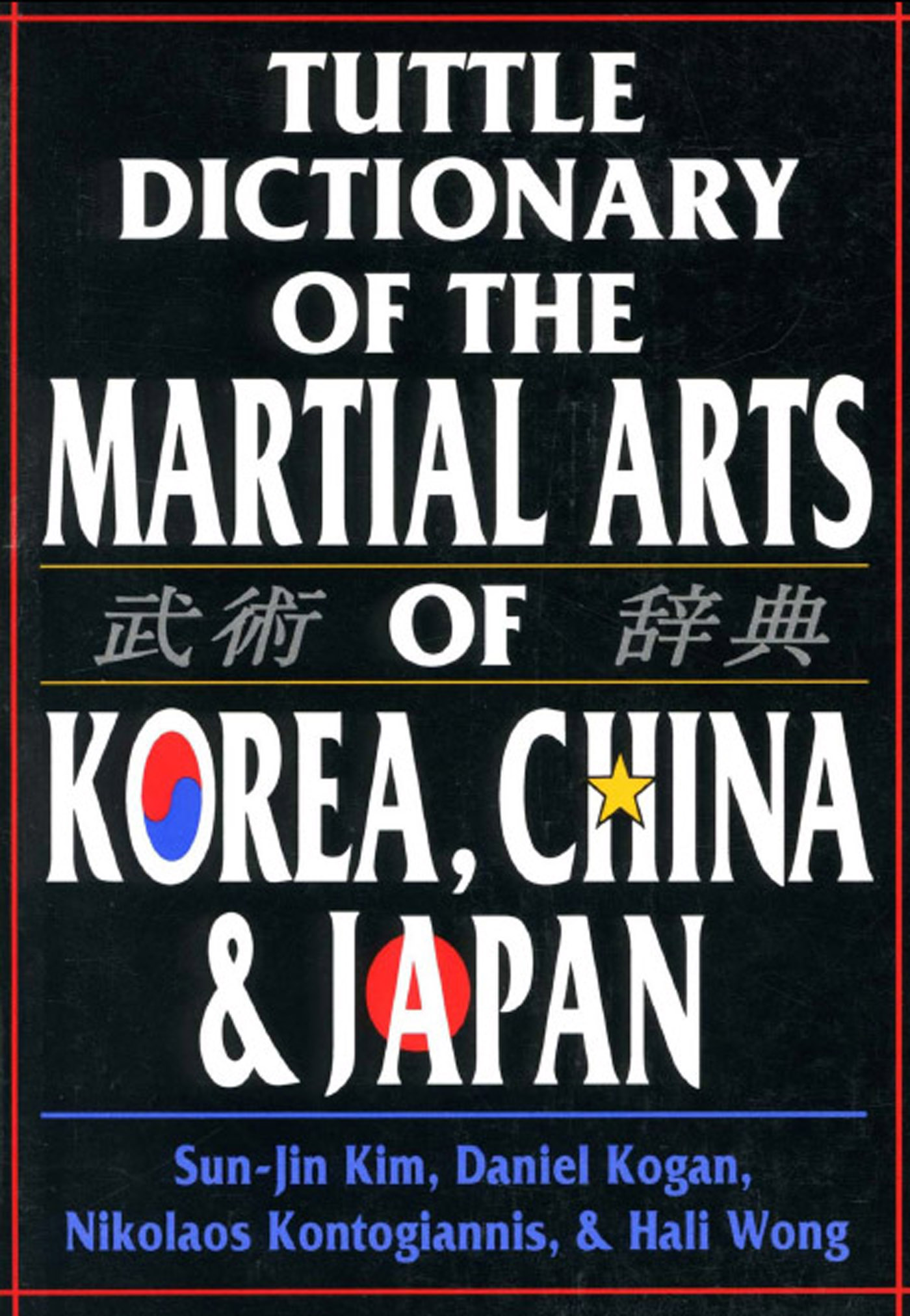TUTTLE DICTIONARY
of the
MARTIAL ARTS
of
KOREA, CHINA & JAPAN
compiled by
Sun-Jin Kim, Daniel Kogan,
Nikolaos Kontogiannis, and Hali Wong
CHARLES E. TUTTLE COMPANY
Rutland, Vermont & Tokyo, Japan
To Lee Yong-Bok,
whose research for the Korea Traditional Tae Kyon Research Association has paved the way for me and so many others.
—SUN-JIN KIM
To my sensei, Onaga (Ryoko) Yoshimitsu
Shihan and President of the Zen Okinawa Karate-do Renmei, who has shown me the way.
—DANIEL E. KOGAN
In memory of Gwaan Fei Gong Sifu
my teacher and mentor who taught me the skills and traditions of Huhng Ga.
—NIKOLAOS KONTOGIANNIS
To my si gung, Wong Ha
—HALI WONG
Published by the Charles E. Tuttle Company, Inc. of Rutland, Vermont & Tokyo, Japan.with editorial offices at Osaki Shinagawa-ku, Tokyo 141-0032. © 1995 Charles E. Tuttle Publishing Company. All rights reserved. LCC Card No. 94-61453, ISBN: 978-1-4629-0515-7 (ebook)
First edition, 1996 Second printing, 1996 Printed in Singapore
TABLE OF CONTENTS
| Introduction | 5 |
| Pronunciation Guide to Chinese | 7 |
| Pronunciation Guide to Japanese and Okinawan | 10 |
| Pronunciation Guide to Korean | 12 |
| The Entries | 15 |
INTRODUCTION
This book was inspired by the genuine desire of its compilers to someday learn the true essence of the traditions of the Asian martial arts. As the martial arts are an expression of Asian values and a cultural heirloom that for most of its history, with the exception of a few notable classic works, has been transmitted as an oral tradition from master to student, today most serious students of the martial arts find it necessary at some point to learn, to some degree, the native language of their respective arts.
To this end, we have compiled this work, a list of relevant names of masters, styles, locations, schools, basic vocabulary of the major religions and philosophies, technical martial arts jargon, as well as common everyday vocabulary that one might encounter while learning, researching, or teaching the martial arts.
Having expressed our intent, we humbly submit this work as a first step in what is a never-ending endeavor. Due to the secret nature of many martial arts, the vast geographic areas they have touched, the countless dialects, and centuries of human history they have spanned, it would be unrealistic to believe that we have by any means compiled an exhaustive list. Although great pains were taken to ensure the accuracy of all materials in this book, some readers with firsthand experience in some of the more obscure arts might find faults or omissions in this work. For that we offer our sincerest apologies and ask for the reader's understanding. Although perfection was our aim, we quickly learned that like the martial arts themselves, our final objective is not a stationary point but rather a moving target. The more the details were checked and verified, the more unrealistic it became to include every relevant entry. Considering the volume of information used and cross-referenced when compiling this work we are confident in its ability to stand on its own merits.
This work concentrates on the major languages of the most commonly practiced martial arts (Cantonese, Japanese, Korean, Mandarin, and Okinawan). This is by no means to say that other dialects or national languages have not added relevant vocabulary, but simply that in the interest of brevity and accuracy, we chose to concentrate on those languages that were the basis of our own studies of the martial arts.
We would like to thank Antonio Flores, Alexander Kask, Scott Shaw, and Meik Skoss for their assistance with the proofing and editing of this text. We would also like to acknowledge the following people without whom this book could not have been completed: Naz Bhayani, Carmen Choy, Rick Dove, Martin Drastil, Robert Gough, Robert Kacpura, Vicki Koh, Rodney Lee, Vincent Liew, Ali Novin, Catherine Walters, and Annette Yang.
Pronunciation Guide to Chinese
In this dictionary, we will be presenting entries from China's two major dialects, Mandarin and Cantonese. In both cases we have tried to make the entries as easy to pronounce as possible while still attempting to use standardized systems of romanization. The fact that Chinese is a tonal monosyllabic language with many sounds that are not used in English presents challenges to attempts at writing it using the roman alphabet. Though there are several different systems available, each of which has its own distinct merits, we have chosen to use the pinyin system for Mandarin entries as it is the standard in the People's Republic of China and the Yale system for Cantonese entries as it is the one most commonly used for that dialect. As the existing literature on the Chinese martial arts is filled with spellings from many of the other systems, we have included them and cross-referenced them to the standardized spellings.
For simplicity and brevity, we have not marked the accents for specific tones. Though Chinese can have anywhere between four (in the case of Mandarin) and nine (in Cantonese) tones, which are ways of inflecting a particular syllable, omitting the markings for them will not impair your ability to look up such a word in this book. The equivalent sounds in English for Mandarin consonants are as follows:
b as in boy
c like the "s" in its
ch as in chew
d as in do
f as in food
g as in go
h as in how
j as in jump
k as in kick
l as in lunch
m as in mother
n as in no
p as in put
q like the "ch" in chew
r as in room
s as in so
sh as in show
t as in to
w as in work
x like the "sh" in shy
yh like the "y" in you
z is a sound between the "d" in do and the "z" in zoo
zh
